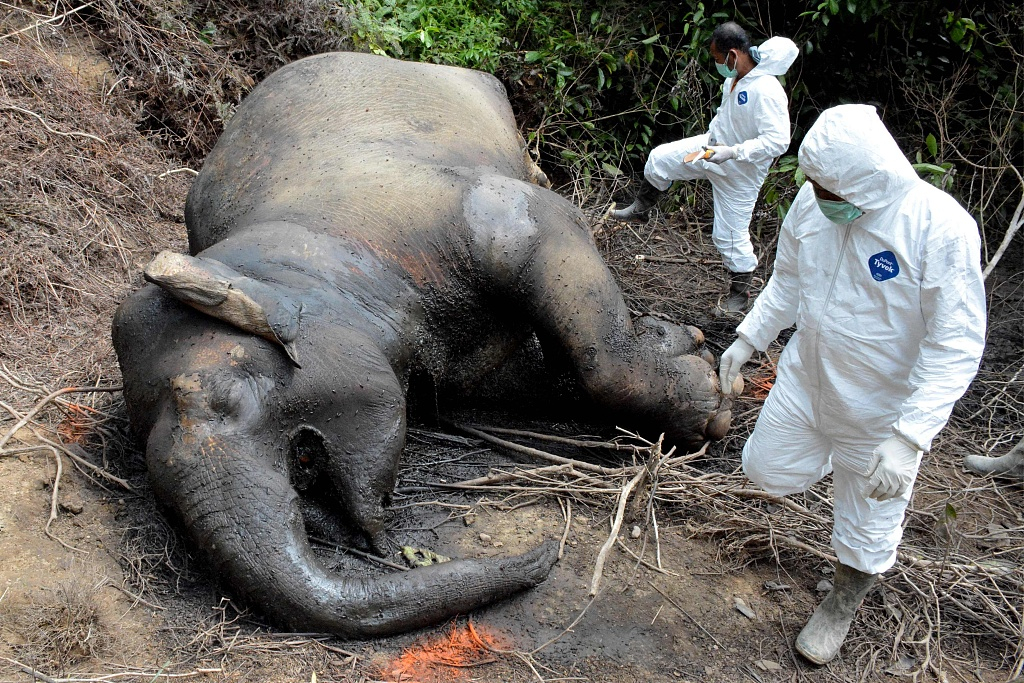
Officials and veterinarians from Aceh's conservation agency inspect a female elephant found dead from an apparent poisoning in the village of Semanah Jaya in East Aceh on November 21, 2019. /VCG Photo
Officials and veterinarians from Aceh's conservation agency inspect a female elephant found dead from an apparent poisoning in the village of Semanah Jaya in East Aceh on November 21, 2019. /VCG Photo
A Sumatran elephant has been found dead from an apparent poisoning, an Indonesian conservation official said Thursday, in the second killing of the critically endangered subspecies this week.
The 25-year-old female elephant's corpse was discovered at a palm oil plantation in East Aceh regency Thursday, hundreds of kilometers from where another was found decapitated and with its tusks ripped off on Monday -- a suspected poaching case.
"Our initial findings found that the Sumatran elephant was allegedly killed by poison," said Rosa Rika, a doctor with Aceh's conservation agency.
The dead elephant's stomach contents would be analysed to confirm its cause of death, she added.
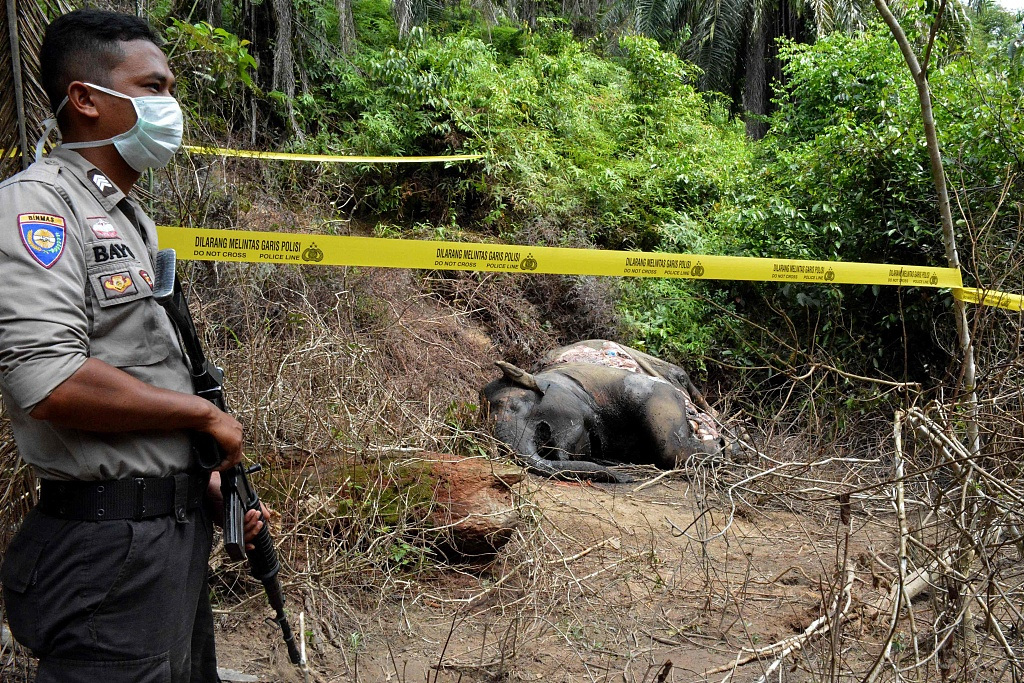
An official from Aceh's conservation agency secures the area around a female elephant found dead from an apparent poisoning in the village of Semanah Jaya in East Aceh on November 21, 2019. The 25-year-old female elephant's corpse was discovered at a palm oil plantation in East Aceh regency on November 21, hundred of kilometres from where another pachyderm was found decapitated and with its tusks ripped off on November 18 -- a suspected poaching case. /VCG Photo
An official from Aceh's conservation agency secures the area around a female elephant found dead from an apparent poisoning in the village of Semanah Jaya in East Aceh on November 21, 2019. The 25-year-old female elephant's corpse was discovered at a palm oil plantation in East Aceh regency on November 21, hundred of kilometres from where another pachyderm was found decapitated and with its tusks ripped off on November 18 -- a suspected poaching case. /VCG Photo
Only a few days ago, another Sumatran elephant was found decapitated with its tusks ripped off in an apparent poaching of the critically endangered subspecies, an Indonesian conservation official said.
The rotting corpse of the 40-year-old male creature was discovered by a plantation worker on Monday in Riau province on Sumatra island.
"The elephant's head had been cut off and its severed trunk was found a meter away from the body," chief of the local conservation agency Suharyono, who goes by one name, said in a statement on Tuesday.
Authorities said the mutilated elephant had likely been dead for almost a week, adding that they were looking for those responsible.
"We suspect the elephant was hunted and killed and then its head was cut off to remove the tusks," Suharyono said.
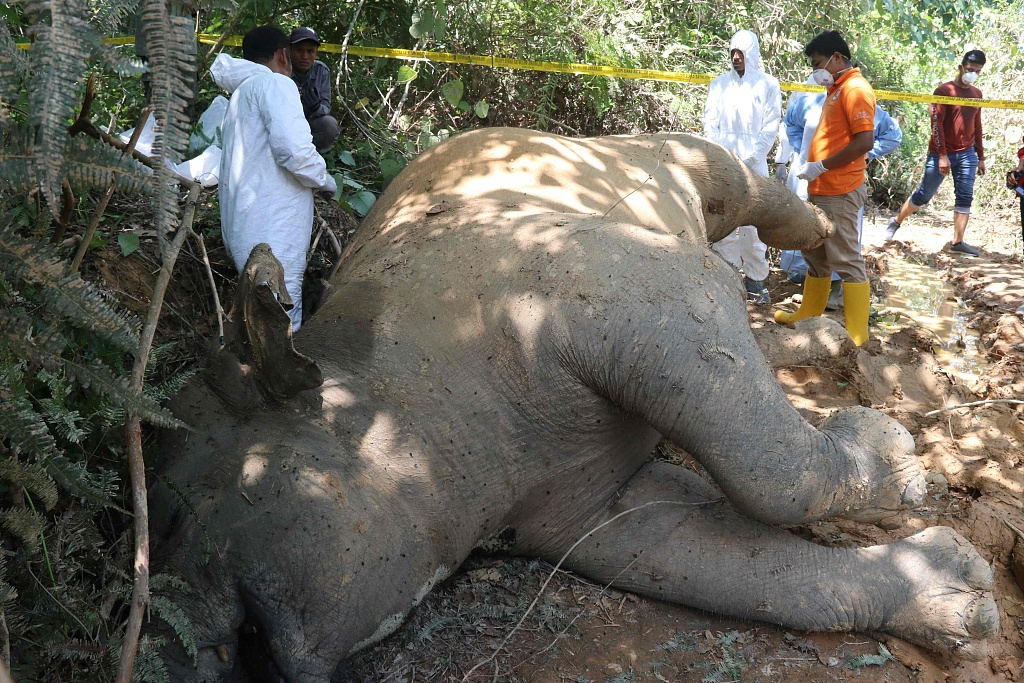
Indonesian police and rangers conduct an investigation on a dead female elephant at the Banda Alam plantations in East Aceh, Aceh province, on July 13, 2018. An Indonesian nature conservation agency said it believes the animal was poisoned. /VCG Photo
Indonesian police and rangers conduct an investigation on a dead female elephant at the Banda Alam plantations in East Aceh, Aceh province, on July 13, 2018. An Indonesian nature conservation agency said it believes the animal was poisoned. /VCG Photo
Last year, the corpse of an elephant was found with its tusks missing in Aceh province in an apparent poisoning case, after several similar cases in recent years.
Last month, Aceh said poachers who threatened endangered animals in the province could receive up to 100 lashes starting from next year. The conservative region administers public whippings for a range of offences under local Islamic law.
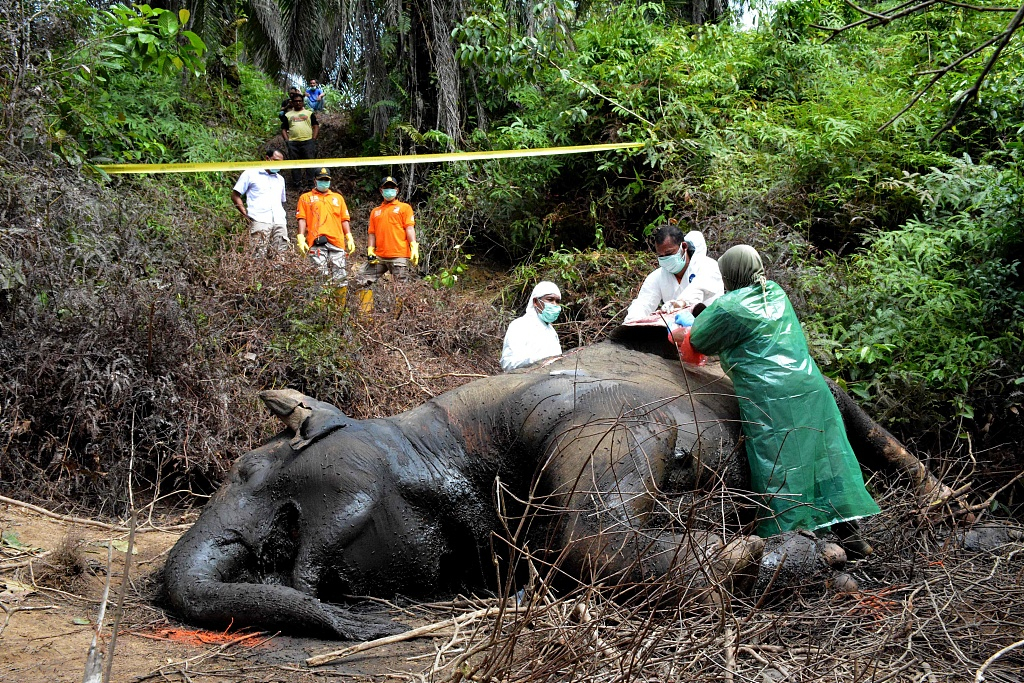
Officials and veterinarians from Aceh's conservation agency inspect a female elephant found dead from an apparent poisoning in the village of Semanah Jaya in East Aceh on November 21, 2019. /VCG Photo
Officials and veterinarians from Aceh's conservation agency inspect a female elephant found dead from an apparent poisoning in the village of Semanah Jaya in East Aceh on November 21, 2019. /VCG Photo
Rampant deforestation to create plantations has reduced the species' natural habitat and brought them into increasing conflict with humans, while their tusks are prized in the illegal wildlife trade. On Wednesday, some three dozen wild elephants stormed into a village in Aceh, destroying two homes.
Indonesia's environment ministry estimates there are fewer than 2,000 Sumatran elephants still in the wild.
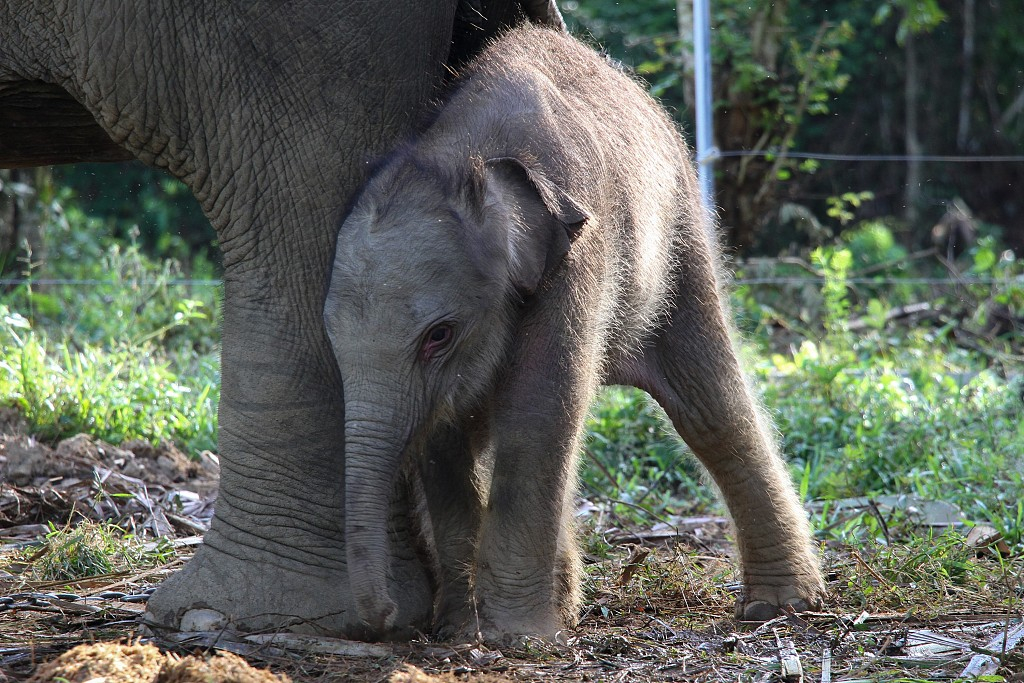
A Sumatran elephant baby with its mother. The calf is born on Julky 24, 2019. The species is classified as critically endangered by IUCN red list. /VCG Photo
A Sumatran elephant baby with its mother. The calf is born on Julky 24, 2019. The species is classified as critically endangered by IUCN red list. /VCG Photo
The Sumatran elephant is one of three recognized subspecies of the Asian elephant, and native to the Indonesia island of Sumatra. In 2011, the IUCN Red List upgraded the conservation status of the Sumatran elephant from endangered to critically endangered, as the population had declined by at least 80 percent during the past 75 years. The subspecies is preeminently threatened by habitat loss, degradation and fragmentation, and poaching as well. Over 69 percent of potential elephant habitat has been lost within the last 25 years. Much of the remaining forest cover is in blocks smaller than 250 square kilometers, which are too small to contain viable elephant populations.
(Cover photo via VCG. Edited by An Qi)
(If you want to contribute and have specific expertise, please contact us at nature@cgtn.com.)
Source(s): AFP